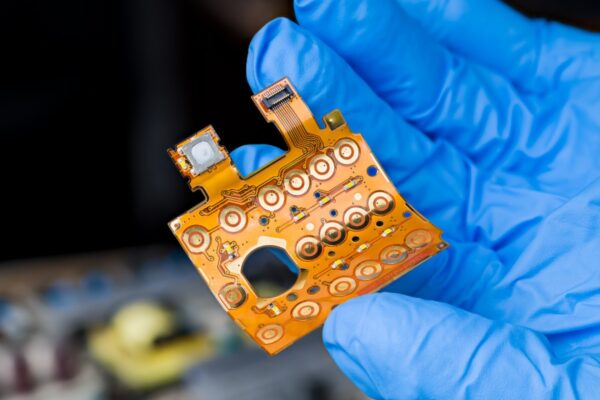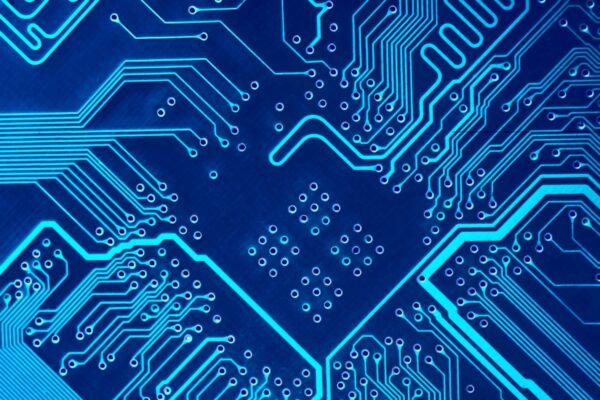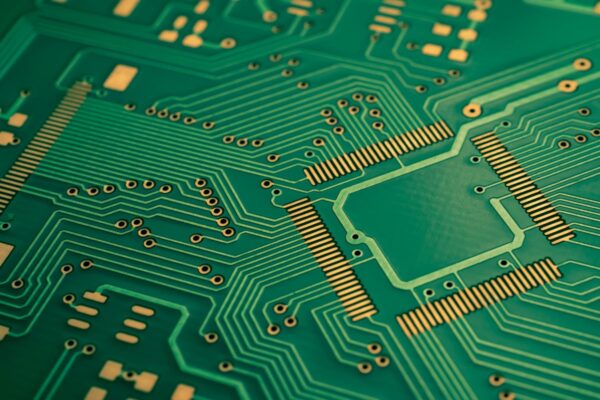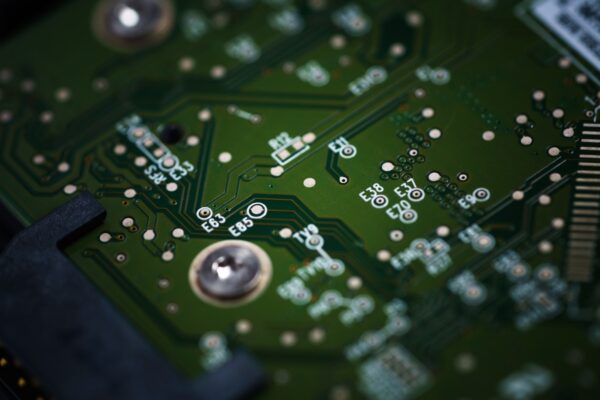What is FR-4
FR-4 is a material grade that is widely used in the fabrication of circuit boards. It stands for “flame retardant” and signifies the material’s ability to resist fire. The “4” in FR-4 represents woven glass reinforced epoxy resin, which is the primary composition of the material.
In PCB construction, FR-4 is utilized in both single-sided and double-sided PCB structures. It consists of a core made of FR-4 material, known as a copper clad laminate, which is a substrate with a layer of copper covering. This core is sandwiched between top and bottom copper layers, forming the basic structure of the PCB. In the case of multilayer boards, additional prepreg layers are added between the core and the copper layers.
FR-4 exhibits favorable properties such as strength and water resistance, making it a popular choice for insulating and supporting electrical components in various applications. It serves the purpose of isolating adjacent copper planes and providing overall bending and flexural strength to the PCB structure.
Frequently Asked Questions
Is It Safe to Cut FR4
The process of cutting a glass-reinforced epoxy laminate (FR4) PCB is safe and can be done using the same techniques that are used for cutting prototype PCBs. One can use a sharp utility knife to score it and then break the pieces out. Another option is to use a Dremel cutting tool or saw.
What Is the Difference Between FR4 and FR5 PCB
FR4 and FR5 PCBs differ in their thermal properties. While FR4 has a Tg of 130° C (266° F) and a maximum operating temperature of 110° C (230° F), FR5 has a higher Tg of 160° C (320° F) and a maximum operating temperature of 140° C (284° F). Additionally, FR5 is thermally more consistent than FR4. It is worth noting that thin inner laminates for multi-layer boards are also made of FR4.
What Is the Difference Between FR4 and CEM 3 PCB
CEM-3 PCB is a close counterpart to FR4. It utilizes a ‘flies’ type of glass fabric instead of woven glass fabric. CEM-3 PCB stands out with its milky white color and smooth texture. It serves as a full substitute for FR4 and holds a significant market presence in Japan.
What Is the Difference Between FR4 and Aluminum
Compared to regular FR4 PCBs, aluminum PCBs excel in terms of thermal dissipation and have the ability to rapidly dissipate heat. Let’s take the example of comparing a 1.5mm thick FR4 PCB with an aluminum PCB.
What Is the Difference Between FR1 and FR4 PCB
FR4 PCB material is particularly well-suited for passing through-holes, unlike FR1, FR2, or FR3 materials. Unlike these other materials, FR4 does not present any challenges or difficulties. This makes FR4 a popular choice for creating various layers of printed circuit boards, from single-layer to multilayer PCBs.
What Is a Replacement for FR4
There are alternative CEM materials available as replacements for FR4, such as CEM-1, CEM-2, and CEM-3. CEM-1 material is a combination of paper, woven glass epoxy, and phenol compounds, and it is particularly suitable for single-sided PCBs. It offers similar dielectric properties to FR4 while being more cost-effective.
What Is the Difference Between FR4 and Rogers
FR4 is an abbreviation for Flame Retardant Level 4. It is a composite material that consists of glass fiber and epoxy, with copper foil laminated on one or both sides. On the other hand, Rogers substrate materials have varying compositions, with some utilizing a ceramic base instead of glass fiber.
How Is Copper Attached to FR4
Board manufacturers attach copper to FR4 by laminating the FR4 sheet with copper foil on both sides using adhesive. They then bond the laminated materials together with heat and pressure, resulting in the formation of a copper clad. This copper clad is subsequently utilized by PCB manufacturers to construct printed circuit boards.
What Is the Difference Between FR2 and FR4
FR4 material is a type of PCB laminate that is resin based and reinforced with glass. On the other hand, FR2 material has a similar appearance but uses laminated paper instead of glass. While FR2 is not as strong as FR4, it is less abrasive, resulting in longer tool life and lower cost. This makes FR2 a suitable choice for educational purposes.
What Color Is PCB FR4
Colored FR4 is offered in various shades including black, blue, yellow, and natural.
What Temperature Should PCB Be Desoldered At
To desolder a through-hole component, start by placing the PCB on a flat and dry surface with the component side facing down. Then, switch on the soldering iron and adjust it to a temperature of 375 degrees Celsius.
How Thick Is 2 Layer PCB FR4
2 layer PCB FR4 has a standard thickness of 1.6mm. It is expected that the PCB fabrication process includes copper clad cores, resulting in a total thickness of 1.6mm for the combination of copper and FR4 material.





